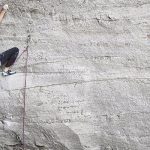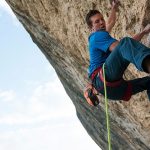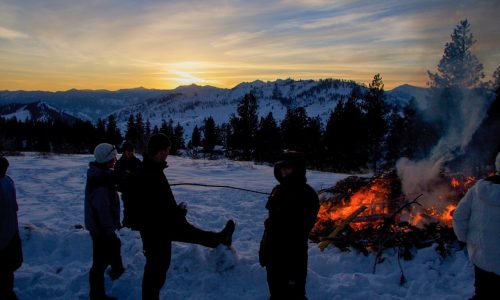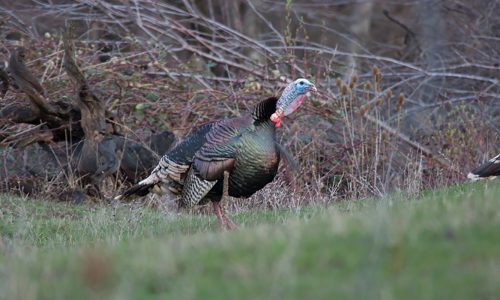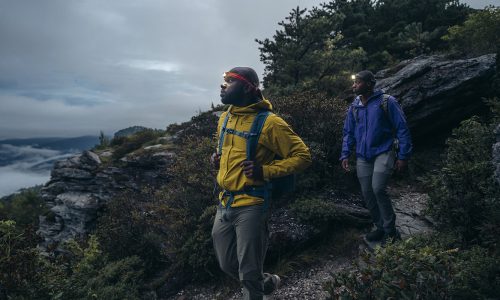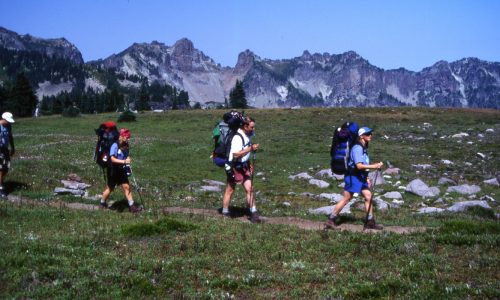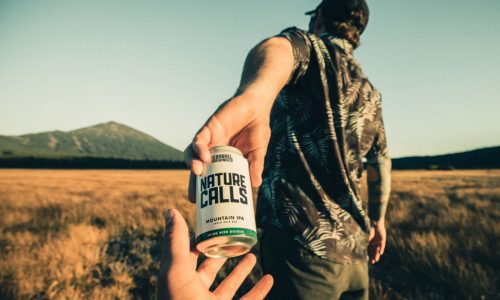Home » Gear Reviews » Climbing » Climbing Shoes » Boreal Lynx
Boreal Lynx Review
August 1, 2012
 82
82 The Good
- Very sticky Zenith rubber—when coupled with the flexible forefoot, excellent for smearing
- Bomber Spanish construction—shoes are durable and will withstand trad/face abuse and multiple resoles
- Slim, snug, comfortable heel cup
- Wide, high-volume fit; good feel and comfort out of the box
The Bad
- 5-5.5mm sole initially thick, causing “smedging” instead of edging
- Some clunkiness and lack of toebox precision
An intriguing, solidly constructed all-around performance shoe reminiscent of the original Boreal Aces from the late 1980s—aspiring to the trad/face niche with cutting-edge Zenith rubber (very sticky) and the savvy new V2 rand and heel. On the downside, a thick sole plus flat, broad toebox keep the Lynx in more of a trad/middling-sport shoe arena—a more pronounced downturn and thinner sole could heighten sensitivity, though compromise performance in cracks.
Any shoe trying to fill this “trad/performance all-arounder” niche has its work cut out for it. You want a shoe that’s stiff enough for edging, not so downturned you get “foot-binding torture” in cracks, soft enough for face-hold sensitivity and smearing, but also durable enough to withstand grotty, grainy, crystalline trad rock, all-day mileage (read: being on your smelly, sweaty, nasty dogs for hours unending), and multiple resoles. Such shoes need to be many things to all climbers, so it’s a tribute to Boreal’s three decades of design ingenuity that the original Ace still has such a following. The original Boreal Ace from the late 1980s is so beloved that there’s an entire Supertopo thread devoted to it, replete with photos and gushing anecdotes.
The Lynx is a proud descendant in the line and should appeal to aficionados of the genre.
Smearing + Edging = Smedging
One of the best attributes of the Lynx is their smearing—as with the Kintaro, the Zenith rubber is soft and very grippy, and you get plenty of it in the 5 to 5.5mm outsole. With a nice wide last, the Lynx also fits well out of the box and had a markedly flexible forefoot, both solid attributes for instant smearing performance. (With stiffer, narrower shoes, I’ve often undergone break-in periods of up to four weeks before I trusted them on smears!)
On the downside, as with the Kintaro (though to a lesser degree), the thick sole rolled on edges under high pressure—a problem that mellows as you wear down the rubber—and might preclude slotting into the narrowest cracks. On the upside, climbers as proficient as Tommy Caldwell have confessed that smedging sometimes works better than edging on micro-footers, so this could be a good opportunity to apply that Zenith rubber and test the theory out!
Trad Support
“All-arounders” need a good, stiff midsole to keep your feet from tiring and to withstand trad punishment. As with the Kintaro, Boreal has used a “special anti-deformation” midsole that offered good edging support—perhaps better than the Kintaros, or it could be that the Lynx’s higher wraparound rands and more conservative toebox impart extra stability. The shoes also fared very nicely in cracks, with good rand coverage over the forefoot to ward against pain, and reliable lateral stability. They also have an interesting ridge pattern running from the arch back to the heel—helpful when downclimbing slabs butt-first or for standing on ball-bearing choss.
Precision
The biggest drawback to the Lynx was their lack of precision, which made it tough to feel micro-grips (the thin face holds you find on harder trad and sport climbs) at the outer threshold of the shoe’s performance range. Some of this is due to rubber thickness, but it might also be that the shoes are not quite downturned enough—that the footbed is too flat to drive your toes all the way forward. (I do have wide, high-volume feet; perhaps folks with narrower feet will get their piggies clear to the end of the shoe where it droops to a nipple-like point.) The toebox is also the classic all-arounder’s broad, rounded profile, which will sacrifice some precision. That said, if you were to downturn the shoes more to increase bite, they might cause ungodly pain in cracks, where you need a flat shoe that twists with your tortured dogs.
As a side note not necessarily related to performance, the padded high-rise mesh tongue, a nice advent that’s stitched to the sides of the shoe and is not free floating, felt almost oddly puffy when the laces are cinched down; it does however provide good upper-foot protection. These shoes would be da bomb in granite areas like Joshua Tree or Yosemite, where friction is king but you also need to be versatile on face holds and in cracks.










